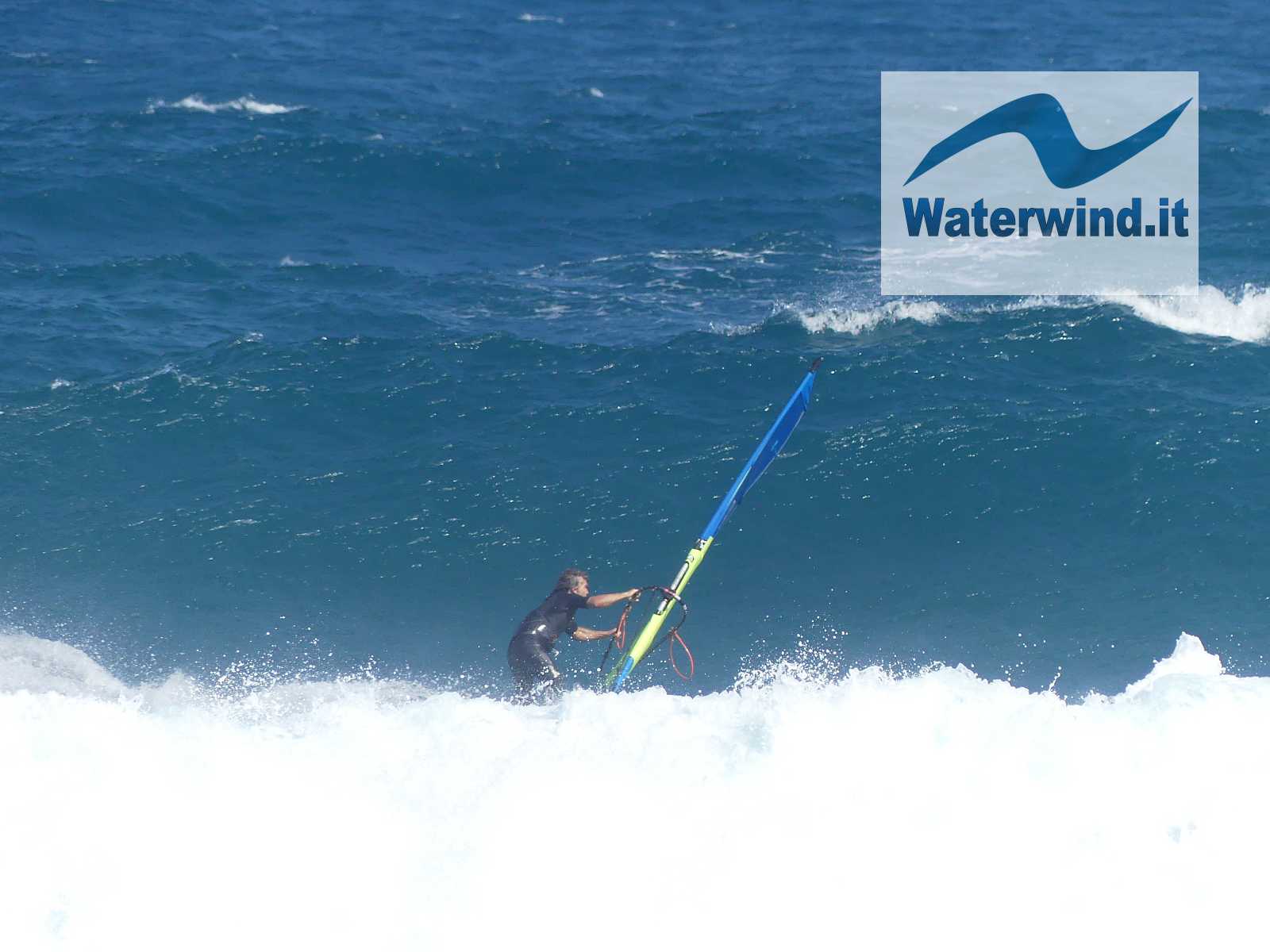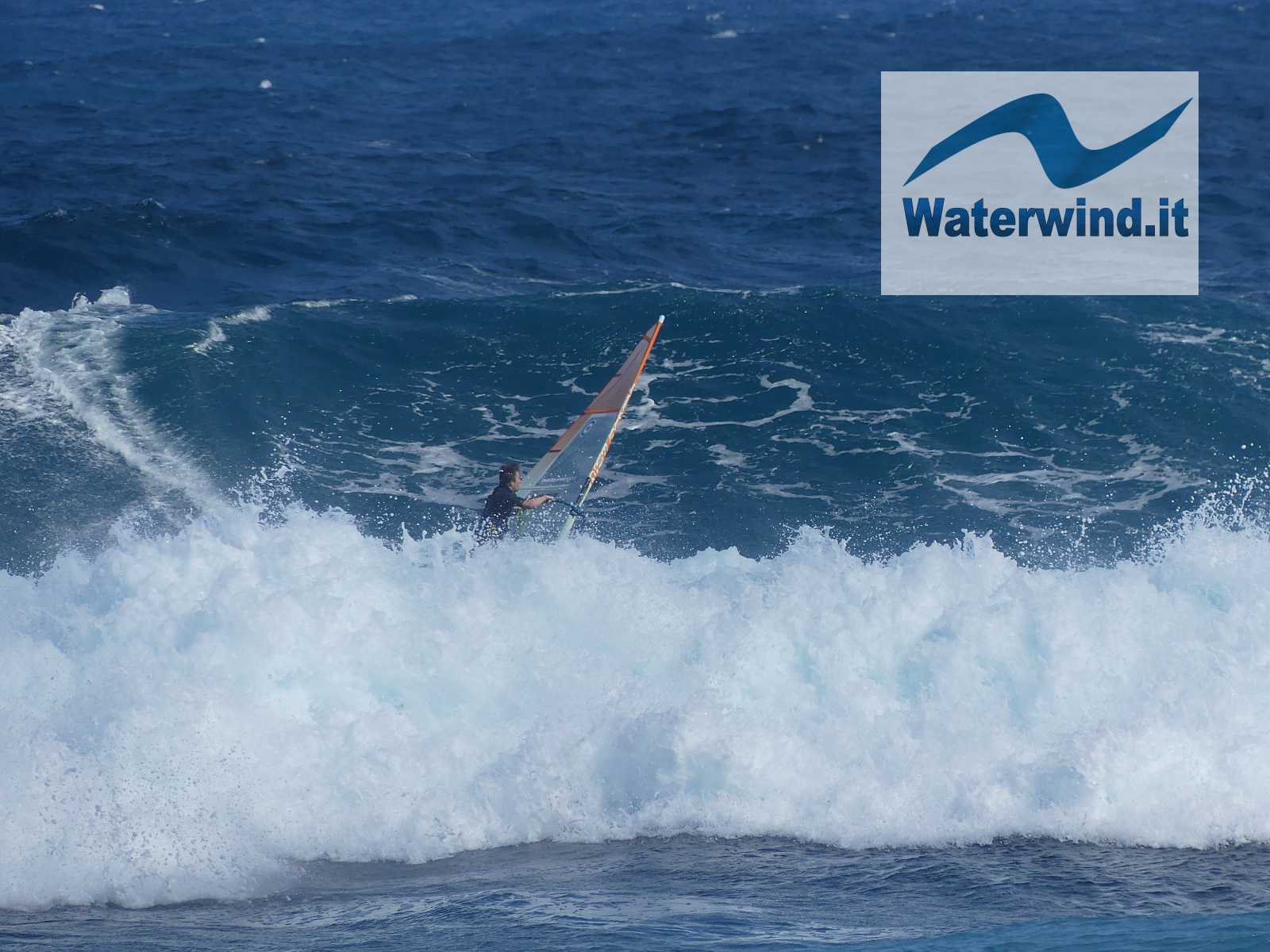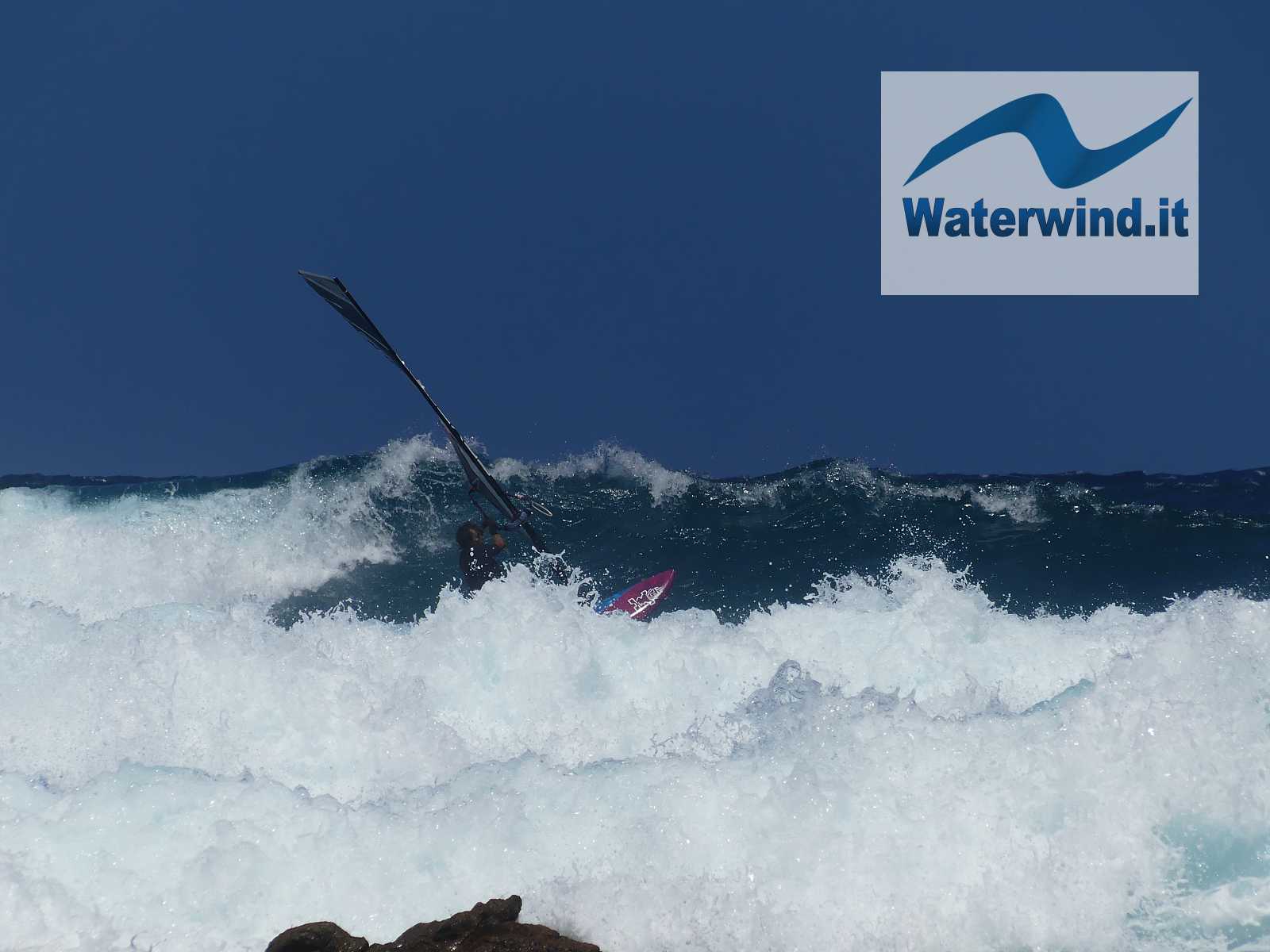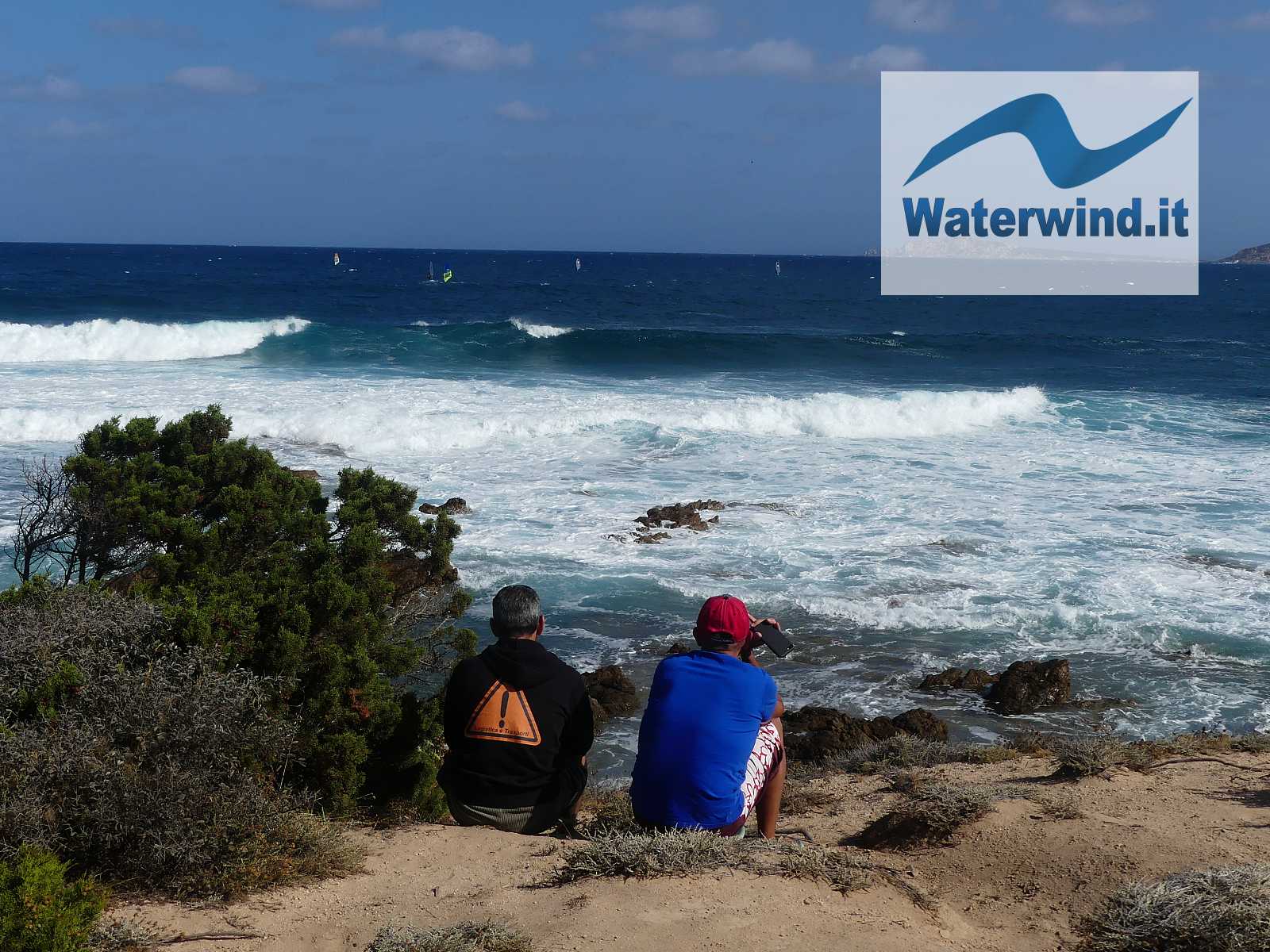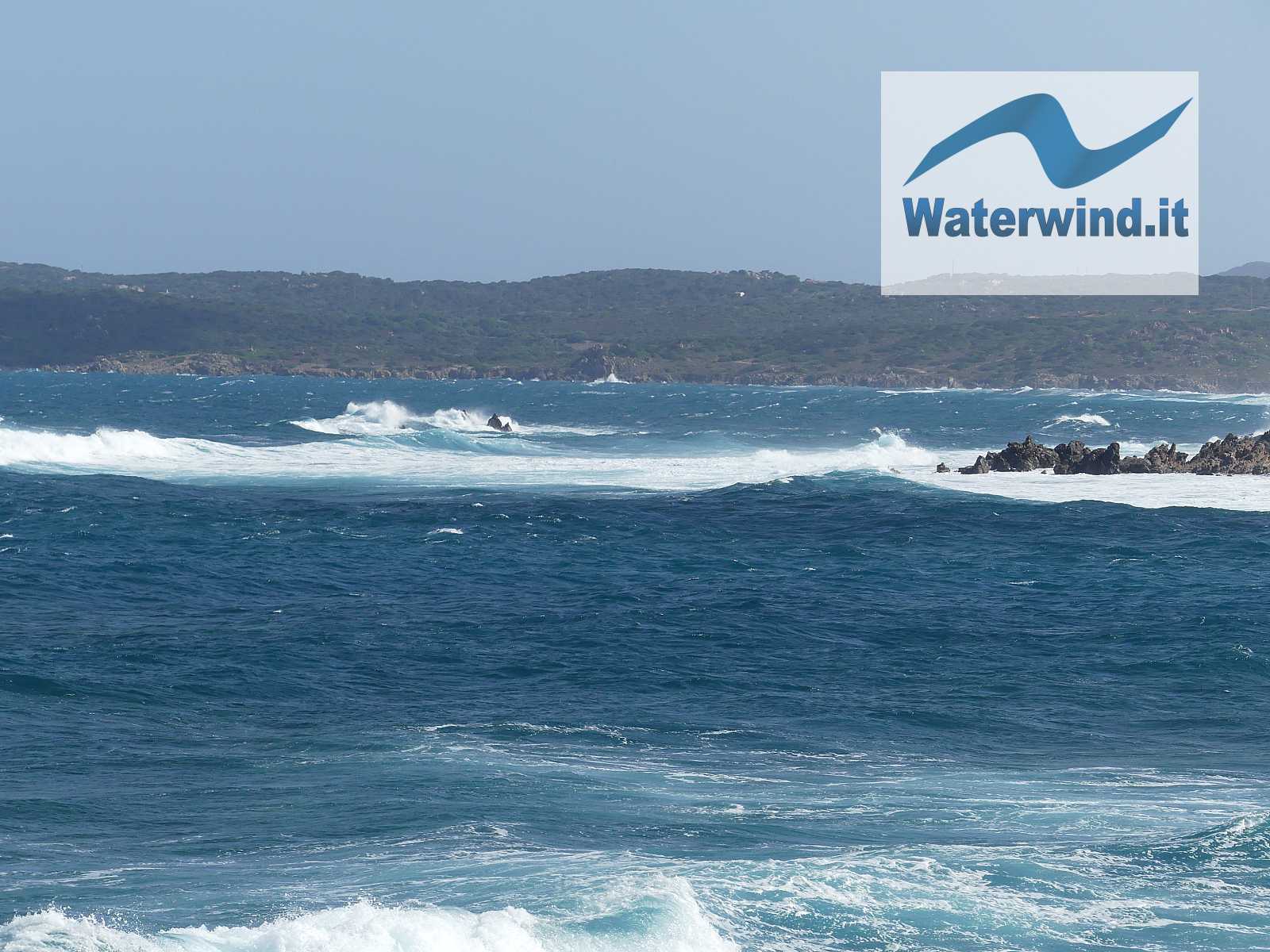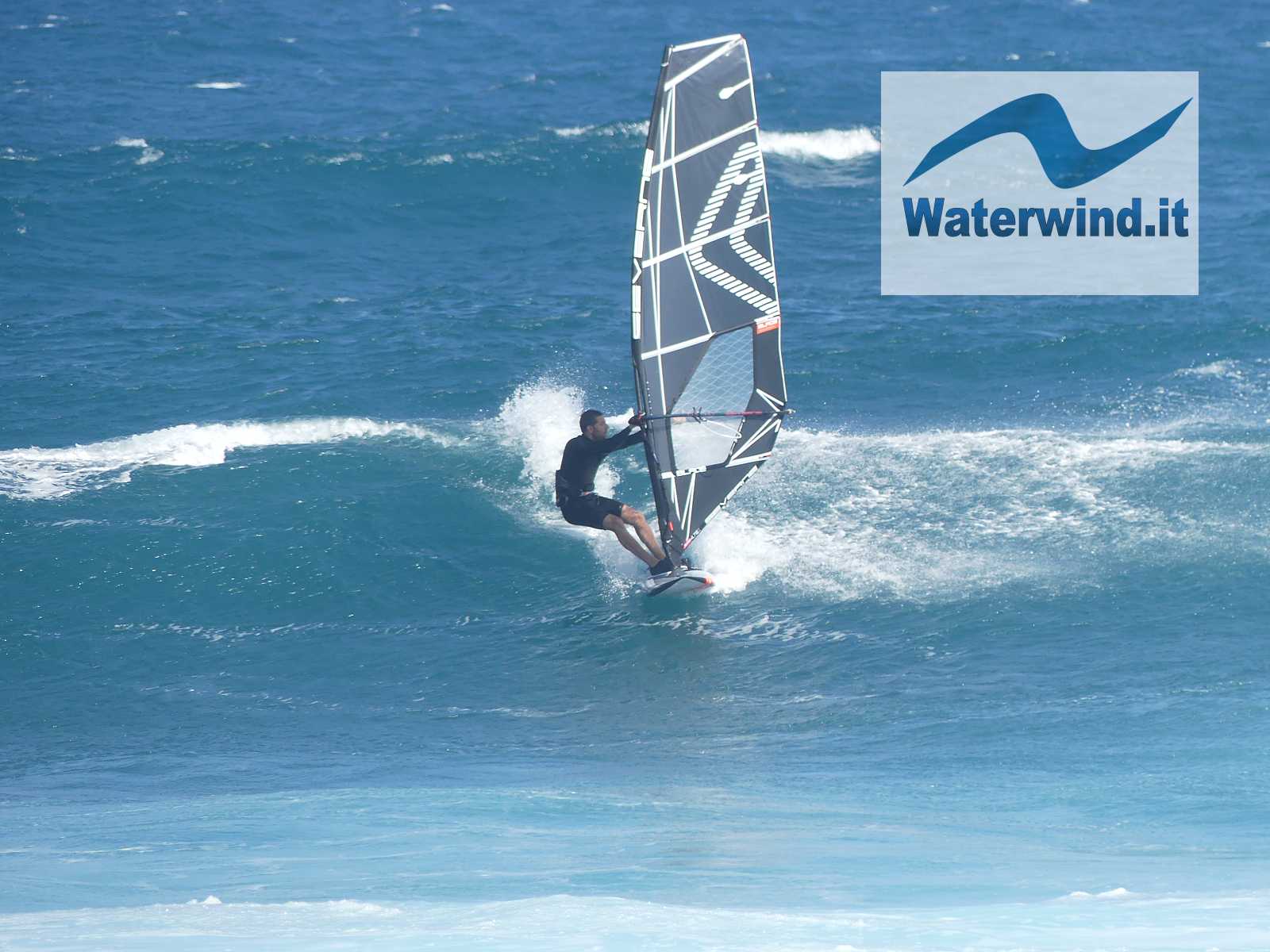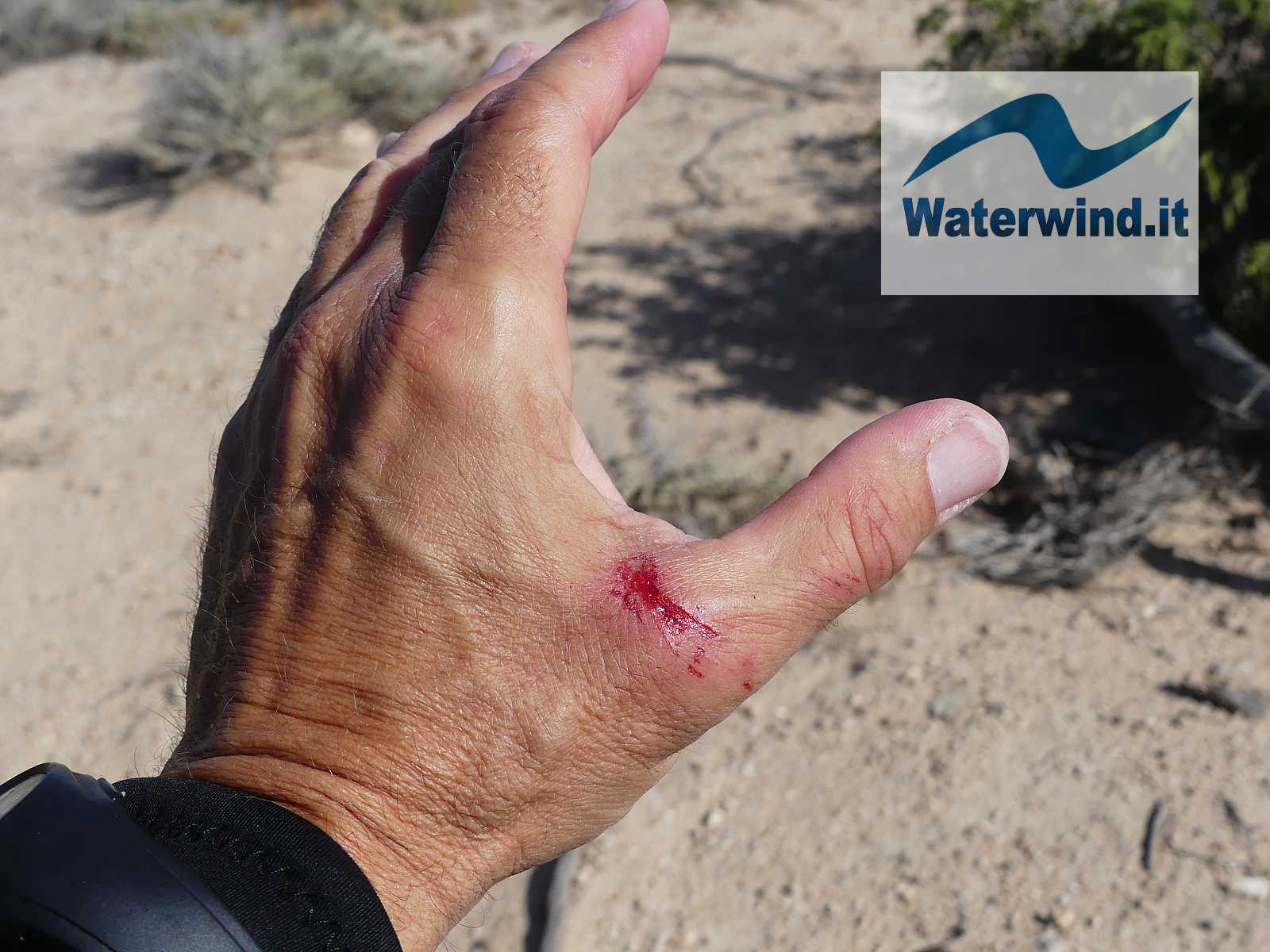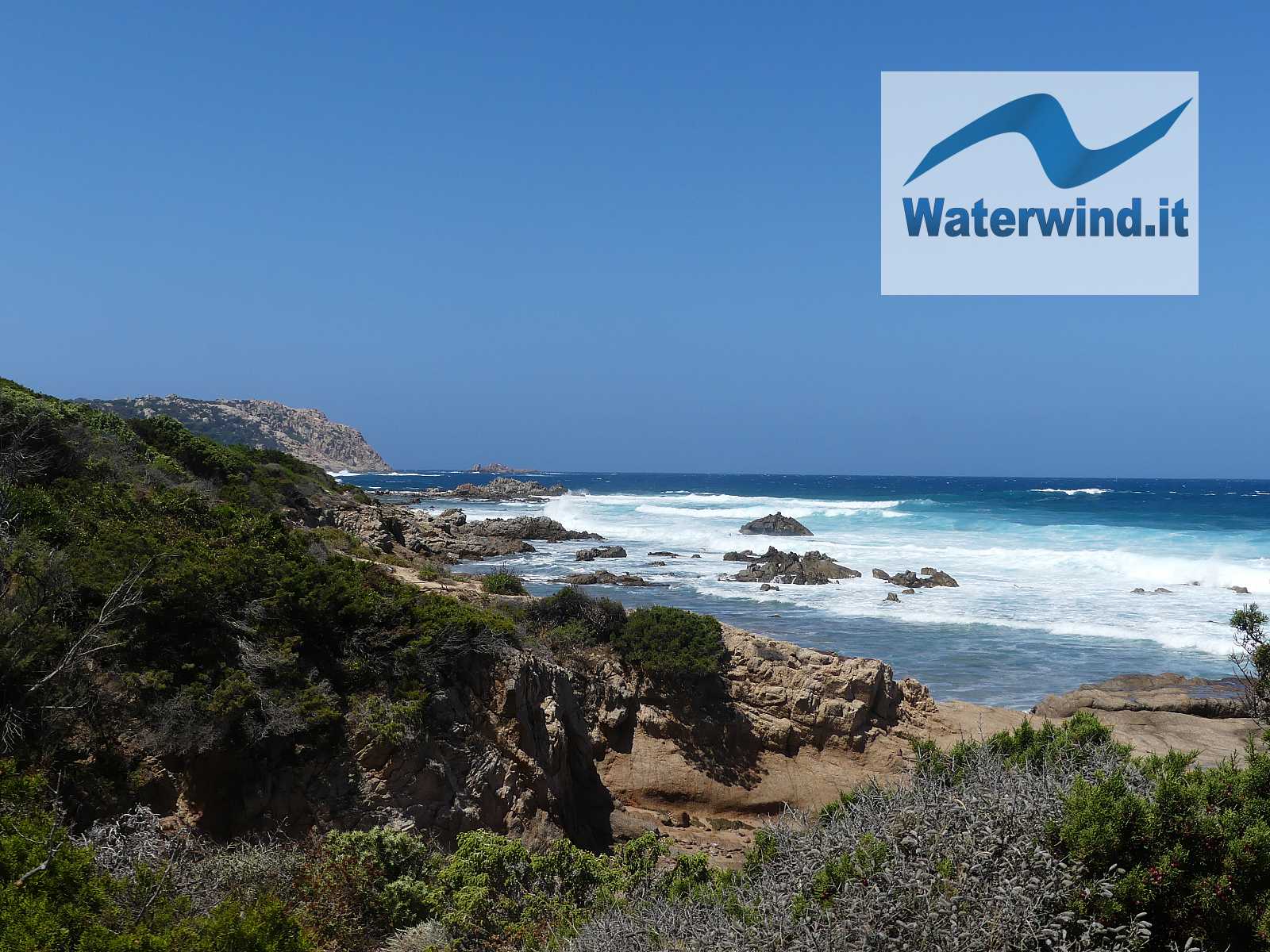Sardinia offers some windsurfing spots, where you can do waveriding in oceanic conditions. Cala Pischina, in the famous North Shore of the island, is one of these. Here is our review, written together with my friend Paolo.
Windsurfing, spot review: Cala Pischina, Sardinia
Cala Pischina, in Sardinia, is a mythical spot, above all for the splendid colors of the sea, for the beauty of the surrounding area and for the conformation of the seabed, which, on days with an intense mistral wind (which here and in correspondence with the Bonifacio Channel tends to channeling and re-orienting from Ponente - W/Libeccio - SW), produces very entertaining waves for wave sailing (and also jumping) fans.
It is a 360-degree windsurfing spot, for expert navigators. Perhaps one of the most dangerous spots in Italy, where one is more inclined to risk going to rocks, sacrificing equipment and skin..... Even if, like other waveriding spots, Cala Pischina has many faces: some days it is impracticable for normal humans... with waves that can even be double mast, and winds over 40 knots; other days, it is doable with mast high swell waves and wind between 15 and 25 knots; and still others in which it is almost a spot like many others...
The greatest danger is given by the fact that, downwind, at the northern end of the bay, there is Bomba Point (see our map), the real frightening side of the spot, where monstrous waves break on an expanse of outcropping rocks that leave no escape. Therefore, especially on days with big waves, it is advisable to evaluate one's abilities carefully before entering the water, and not to ride in front of Bomba point....
But the game is worth the risk: in fact, on the best days the wave quality is fabulous.
The spot is located in the North, in Gallura, a few KM (and 15 minutes by car) from Santa Teresa (see our map below), and can be easily identified along the SP90 (western Sardinian road).
Arriving, in fact, there is a clear asphalted parking lot that overlooks the spot showing all its beauty (and the multitude of rocks!). It is immediately clear that there are two small beaches divided by rocks (obvious...). The one to the northeast is the real Cala Pischina (indicated by Google maps), suitable for bathing, but from which you must not start your windsurfing ride (you would end up in front of Bomba point). At the limit, it is the last beach .... where to land in case of problems (before Bomba Point). The smaller one, further to the South East (see our map) is the real spot beach where you go out and back when windsurfing.
The parking lot is not very big, but you usually find a place. Otherwise, you can park along the road SP90. The locals riders rig at the parking lot and go down with the equipment to the spot beach, or even from a tiny one, which is located directly under the Bar (there is a mythical bar for Super sandwiches, or post-session beers, overlooking the bay, and Corsica, not to be missed! ).
From the car park, there are a number of footpaths, through the scrubland, which descend to various points in the bay. The one that starts south of the parking lot is the one that takes you to the beach of the spot faster. Unfortunately, some points of the path are used as toilets by the frequenters of this bay. We take this opportunity to invite everyone not to deface such an enchanting place. In the summer, the Municipality places some chemical toilets in the parking lot. A solution would also be needed for the rest of the year.
We advise against following the locals out, in the middle of the rocks below the Bar, because unless you know the seabed well, there is the risk of doing damage: the sea corridor between the rocks is very narrow.
Better to "pack" the rig, wear the wetsuit, bring the equipment to the beach which is on the left (or upwind with the west, or south-west wind), or, alternatively, also in the pine forest which is close to the beach , and rig there.
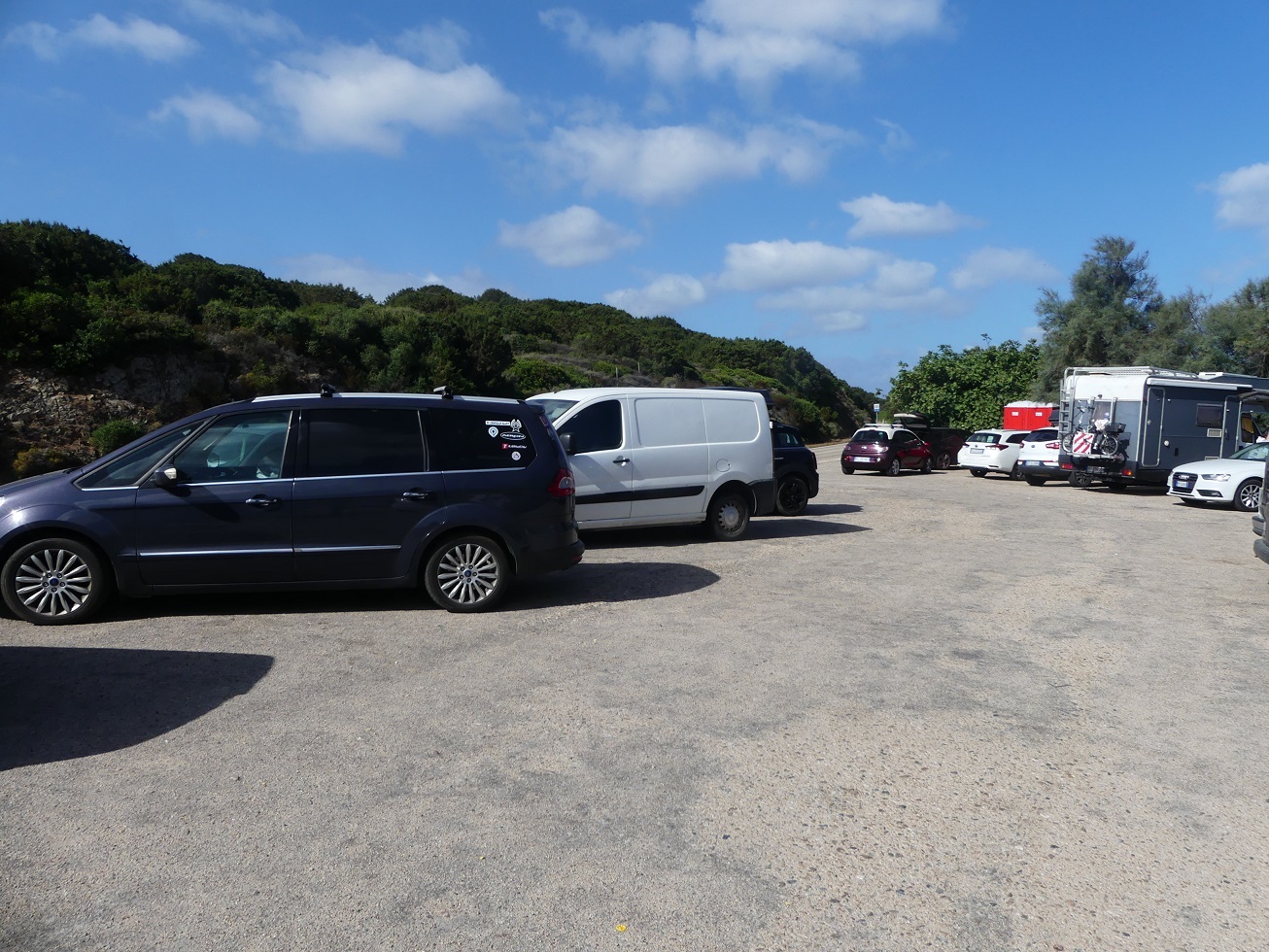
Once rigged, you enter the water, a difficult "job" because there are rocks everywhere and you have already noticed it looking from the parking lot. In fact, even the exit channel in front of the spot beach is not very wide (blue line, in our map).
Try to see what the locals do, and/or follow our instructions.
Inside, usually, there is no wind, so you swim up to the rock that is upwind of the beach ("upwind rocks", in our map), and then waterstart as close as possible to this rock, and not drifting too much, because downwind also the situation of the outcropping rocks is not better ("downwind rocks", in our map), and the wind is weak, too. Pay attention that just downwind of the aforementioned rock (to its right when going out) , emerged and visible, there are other slightly submerged rocks that can be glimpsed for a few meters, over which you must not pass.
Once you leave, the advice is to become familiar with the spot. Making too long rides, you'd arrive in the middle of the waves which will then break at Bomba point; when the sea is big they are "huge palaces", and when it is very big they can even break offshore dragging everything they find on their course into Bomba point ....
Therefore, initially, it is better to make short rides, without planing, but trying to float upwind, if the wind is low, and go up again to the beach/inlet from where you started. When you are at sea, and look towards the land again, the most evident reference to keep in mind is the rocky promontory, immediately SW of the spot beach, where the "photographers" usually station themselves (see our map again).
The advice is not to go too windward with respect to the inlet, especially on days with small waves, because there are rocks outcropping in that area upwind (with small waves you surf closer to shore, and it's dangerous).
We advise, especially in the first sessions, to become familiar with the spot, without daring and doing too many bottoms, because you would risk ending up too downwind, where the waves can break on the rocks, and/or there is little wind, to go out again at sea, or do a waterstart in case of a fall. The best thing would be to make one-two bottoms and leave the wave.
Initially, you are on pins and needles. Experience with the spot is essential. Slowly, you get used to it, but always be careful. Letting go too much is never a good thing, in fact many windsurfers, even experienced ones, end up on the rocks. There is no great danger of getting hurt (except for really demanding days), but the equipment will suffer, and a few scratches can always occur.
When the sea is not very rough, the waves depower a little near the shore; therefore, unless you windsurf until the end, the risk of ending up on rocks is less. And it is much easier to overcome breakers on the way out.
When the sea is rough, the danger increases because the waves do not lose power even near the coast. So, perhaps it's better to catch the last wave of the series to be able to get out in time. Fabio's note: on my first session, to escape from a wave that remained powerful even near the shore, I made the mistake of not returning to the exit beach (see technique described later), but heading towards the area of rocks downwind to the beach, where there is no wind. So once I fell there, I couldn't waterstart. So I made the second mistake, that is, I tried to get out of the water from the rocks (fortunately, without any particular damage), instead of letting myself be carried away by the current a little downwind, in an area where the wind blows again.
Getting out of the water is not too complex, but requires a precise technique: just follow the same path to enter. In other words, having caught a last wave in front of the promontory of the photographers, you let yourself be pushed and carried by this straight up to the beach. Even if, as we approach the shore, the wind will decrease, the thrust of the wave will keep us planing or almost planing, and therefore quite stable and fast on the board. Someone even manages to get to the beach shoreline. Most swim the last few meters in front of the beach, where they eventually hit bottom with their feet. Watch out for the fins, there are outcropping rocks!
If, drifting, you end up leeward of the beach, do not try to get out through the rocks, but aim straight for the leeward beach, that is to the real Cala Pischina; it's safer.
And now the most important thing: how to surf and make the most of the magnificent waves of Cala Pischina? The area where the waves are to be caught is the one in front of the promontory of the photographers, or slightly upwind of it (see red line, and signs, in our map). As usual, and valid in all wave spots, you look over your shoulder to check the sea surface, and detect the arrival of a good set. You take the chosen wave, and go upwind until you reach the promontory indicated above, paying attention to the rights of way on the wave. When the wave starts to break to your right (the wave, here, is a left), or becomes sufficiently steep (and here, the waveriding experience comes into play), you start with the first bottom, followed by the first cut back. The wind, with side / side off direction, also allows for a nice down the line. In the first sessions here, do one, or at most, two bottoms and related cut backs. Then, use the wall of the wave to accelerate down the wave while (hopefully) it is dying out, and jibe over its final non-breaking crest, and head out to sea again. The third bottom, if you are not expert, could be fatal, because it could take you to the rocky area downwind of the beach, where there is no wind. Anyway, there are days in which Cala Pischina is forgiving, and even if you end up in that area, nothing dangerous happens to you (but keep in mind what was written above, regarding the mistakes not to be made).
In conclusion, Cala Pischina is a spot where, especially the first few times, before entering the water, you chicken a little, and after exiting the water, you wonder when the next session will be....
Hang loose. Fabio e Paolo.
P.S. If you want to add any other advice, or impressions, you can do so in the space for comments below.
Clicca qui, per una bella slidegallery di una giornata a Cala Pischina
Without your Support, Waterwind wouldn't exist. Become our supporter!
If you want to advertise with us, read here, or contact us.
Collaborate with us. Read here!
Buy our Gadgets! Visit our YouTube channel!




